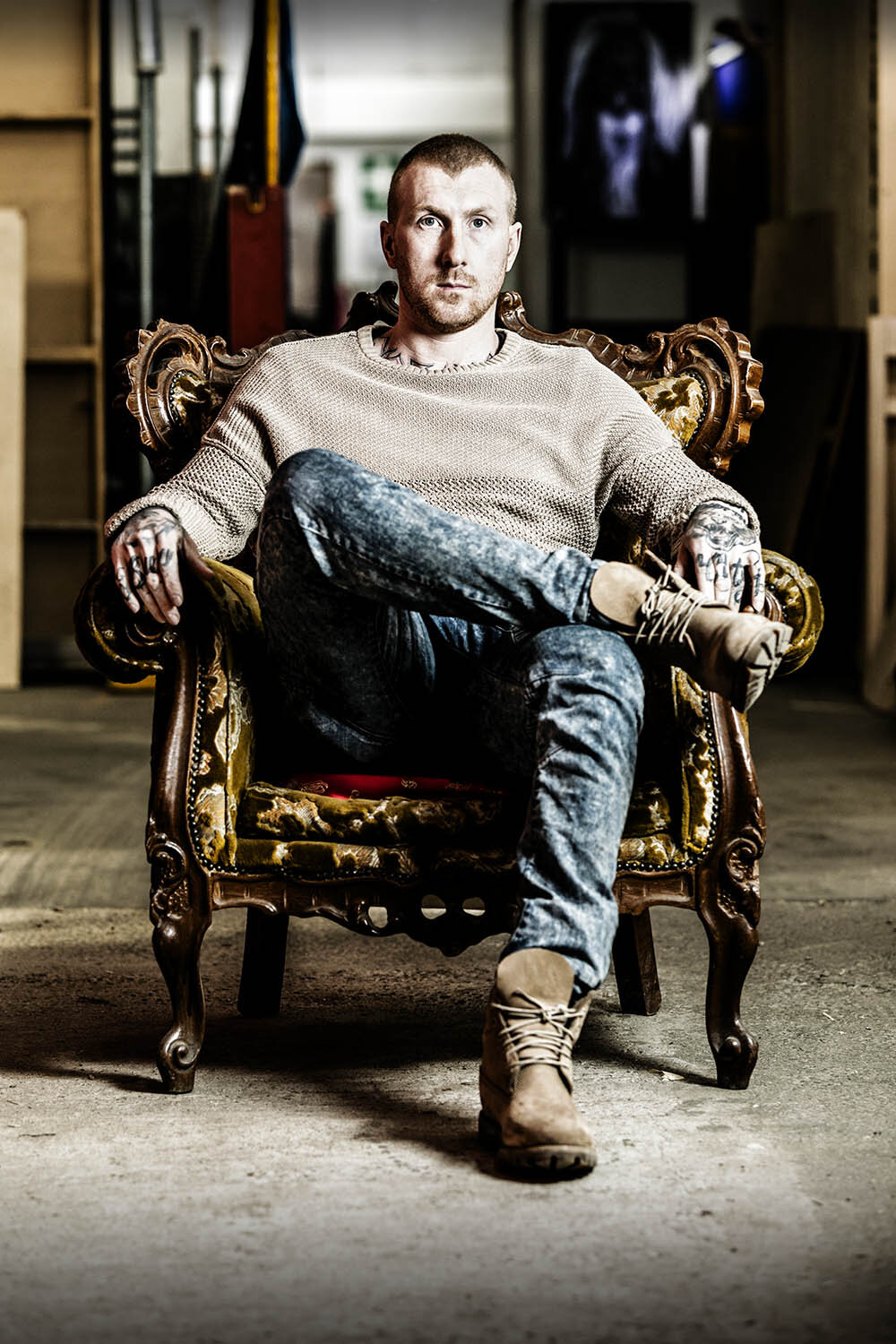Rory Cushnahan
Army, Artist
During Rory’s adolescent years, he skateboarded and practised his bass guitar for hours at a time. He loved martial arts and kickboxing and had his own clothing brand as a teenager. However, when he joined the army at 18, all of this “went into the bin”.
Rory knew he’d always wanted to be a soldier, but the reality was much more confronting than he’d imagined. The trainers were tough men and their motto was to Train Hard and Fight Easy. Surviving training meant that a recruit had earned the right to wear the beret, and that they were a valuable asset to the Australian Defence Force, ready for deployment.
After two years of preparation, he was deployed to the frontline in Afghanistan and spent a gruelling nine months there with his Infantry unit. The unit’s main purpose was to mentor the Afghan National Army personnel. Like most soldiers who serve in a war zone, hyper-vigilance soon became a part of Rory’s life and remains so to this day. On his return to Australia, he completed five years in the 5th Battalion, Royal Australian Regiment in Darwin before leaving the army.
As Rory adapted to civilian life, he admits there were times when he felt unsupported by both individuals and organisations, both military and civilian. Rather than knocking him down, these experiences made him sensitive to the suffering of others. He became aware of friends and other veterans who felt abandoned by the military after they were discharged and he became passionate about getting their stories known. He also maintains close connections to the people he fought alongside during his time in Afghanistan.
Although Rory was always drawn to creative forms of expression such as drawing and music, he found that it wasn’t until after leaving the army that he discovered the true power of art.
“The creative process is like an exercise in mindfulness. The positive focus of attention and time spent mastering technique is a kind of meditation.”
During his time of transition from military to civilian life, Rory began to paint. He used acrylics on canvas and painted both abstracts and portraits, at times a combination of both. Even to this day he still appreciates the graphics on a skateboard and many signed skateboards adorn the walls of his studio. He has respect for all aspects of art and particularly appreciates graffiti and street art.
In no small way, Rory’s art has played a big part in his ability to not only survive, but also to be a mentor and role model to others.
“I’m trying to leave my mark on the world with my art. My time is well spent when I’m interacting with a canvas. It keeps me sane,” he admits, as he adjusts and re-adjusts to life’s constantly changing perception of ‘normal’.
He uses his art specifically to draw attention to young, ex-serving veterans and the life-changing experiences that they have been through. As he meets other veteran artists, he has discovered an affinity with them. He understands their attempts to express themselves and their experiences through art. Rory has completely reframed his life since his discharge and he continually works to reframe the perception of the public towards ex-soldiers.
The challenges of being deployed to a country so different in environment and culture from one’s own, the gravity of war, the gruelling demands of life as a combat soldier and the transition back into civilian life have all become inspiration for Rory’s paintings. In 2021, his work formed part of a long-term exhibition, Between Two Worlds at Melbourne’s Shrine of Remembrance.
“My story is in my artwork. My military story is what separates me from other artists. When you go from being a teenager to a soldier, you’re a soldier forever. It impacts my story.”
A thought, or perhaps a memory, flashes across Rory’s face that may be seen on a canvas in the near future as he considers where, and who, he is at this moment in time.
“I’ve seen death. I’ve seen horror. I’ve seen it all. I’ve come out the other end. I’m just happy I survived.”
@ are.sea.art




